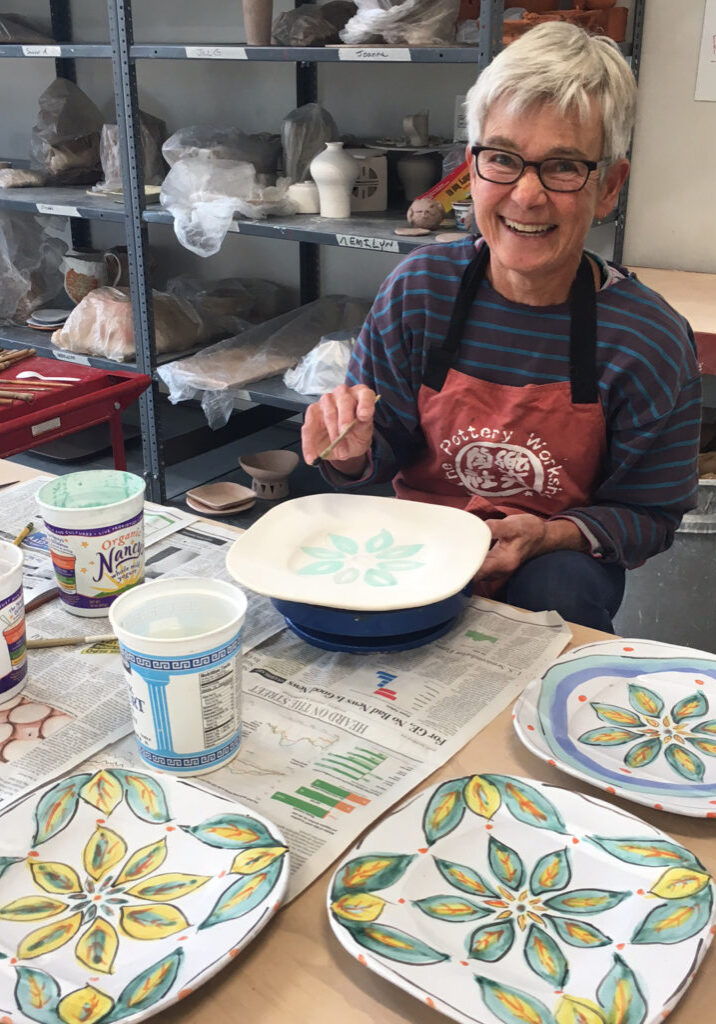I took a roundabout path to clay, via an undergraduate degree in English literature, and attended Kansas City Art Institute when I was in my thirties. I came to the Bray as a resident in 1985, planning to spend a year there, and figure out where to set up a studio. I spent two years at the Bray, settled in Helena, and have been making pots here ever since. I was on the Bray board from 1992-2003. I may be the only former resident who has subsequently enrolled in community classes. I taught them in the 1980s, and have been taking them since 2018, full circle! Which is to say that my long, deep and varied relationship with the Bray has been central to my life as a potter.
I have always made functional pots, for a number of reasons: we experience them by touch, as well as by sight; we share our intimate domestic spaces with them; they can bring the experience of beauty or unexpected pleasure to our everyday lives; and there is always an implied conversation between the maker and the user, bringing them into a kind of community.
After a neurological disease made it impossible for me to throw pots on the wheel, and with encouragement and tutorials from friends, I began to hand build, mostly plates. So that I would not be tempted to try to mimic what I had done before, I chose to use red earthenware, with maiolica, and to focus more on the painting. It’s a very simple technique, requiring minimal equipment and few tools, which feels in keeping with my physical limitations. This has allowed me, late in my career, to be a beginner all over again.
My concerns haven’t changed much, however, in that I want my pots to express their potential to be useful and generous, to have a fluid quality, now achieved in the painting, rather than in the effects of the kiln. I want them to attract the hand as well as the eye, to be both beautiful and friendly, and to suggest that they can provide abundant nourishment to our daily lives.

